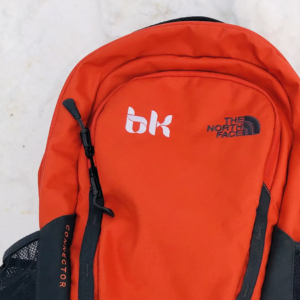How to Leverage Cause Marketing as an Outdoor Brand (The Right Way)
To cause market or not to cause market? That is the key question for outdoor brands right now.
As more and more people campaign for the environment, speak out against racism and inequality, and fight global poverty, they expect the brands they buy from to do the same.

Today’s up-and-coming consumers are Gen Z, who account for up to 40% of global spending. So what does this key demographic care about? Making those dollars count for something.
That’s where cause marketing comes in. Many brands partner with non-profits, with proceeds going toward a charity, cause, or campaign to help a community in need.
The latest (and most prominent) example of cause marketing came in 2020 when brands took a stand against racial injustice after the death of George Floyd.
Outdoor gear companies have particularly clued into aligning with causes. Ryan Gellert, new CEO of Patagonia, said recently, “We are a for-profit enterprise, but we’re committed to using our business to do more than just make money.”
Soon after becoming CEO, Gellert introduced a public land rights campaign, as well as a community energy initiative to the brand’s Patagonia Action Works program.
While there’s inherent value in advertising your brand’s mission and being candid about the causes you care about, there’s always the risk of isolating certain audiences, too.
Older generations tend to be more skeptical of brands supporting global causes and social activism. They question if these motives are authentic, or just a ploy to get more money.
For Millennials, they don’t entirely trust cause marketing tactics, but they do seek out brands that align with causes more than their Boomer parents.

So the real question is whether or not your outdoor brand should engage in cause marketing by actively endorsing and supporting specific causes and issues.
Discover the pros and cons of cause marketing and how you can enhance your company’s brand affinity with (or without) taking a stance on social causes.
What to Think About First as an Outdoor Brand
As an outdoor brand, it’s likely that nature is part of your mission statement — conservation, rehabilitation, or just enjoying the outdoors. If this is the case, cause marketing makes sense with how your personas relate to your brand.
66% of consumers are willing to spend more on a product if that product comes from a sustainable brand. If you’re not already using recycled materials or post-consumer products for your manufacturing, now is a great time to start.
There are plenty of ways to market to outdoor enthusiasts. You can partner with environmental causes, work with local non-profits, or start a fundraiser to build back up a community after a natural disaster.
Taking a break from selling your brand and offering value to a cause can say a lot about your brand’s values. This strategy not only aligns with your brand’s mission statement, but can also speak a great deal to your audience personas who are actively looking for ways to support environmental causes in their lives.
Great Examples of Cause Marketing That Worked
Black Friday is the biggest shopping day of the year. In 2011, Patagonia took a different approach to this marketing event.
With the slogan “We’re in business to save our home planet,” the outdoor company released their Don’t Buy This Jacket ad to encourage people to recycle and repair their clothing before buying new items.

Photo Courtesy of Referral Candy
The result? A huge spike in sales during Black Friday that year.
This is aided in part by the company’s “Worn Wear” initiative that educates customers about how to repair their clothing and thus reduce their ecological footprint.
By adding content that helps customers improve their own sustainability practice, they’ve shown customers that they care more about promoting eco-conscious living than selling their product. But consequently, this inspired brand affinity, which led to more sales.
Mogul outdoor brand REI took a similar approach with their #OptOutside social campaign. They closed their doors on Black Friday and paid their employees to spend the day outside enjoying nature instead.
In just 24 hours, their social media exploded by 7,000%, and they earned 9 awards at the Cannes Lions International Festival of Creativity.
REI – #OptOutside Case Study from BBDOProximitySG on Vimeo.
Disruptive? We’d say so.
The Cons of Cause Marketing
When done correctly, cause marketing can build life-long fans and brand advocates. But when done poorly, it can earn you some bad publicity that could even lead to people publicly boycotting your brand.
A prime example of this is a Pepsi commercial that ran in 2017. It depicted Kendall Jenner handing a Pepsi to a cop during a peaceful protest.
This reductive image was problematic for several reasons — both the inference that social justice-focused protests could be resolved with soda, and the fact that the narrative fed into the “white savior trope.”
The internet did not take kindly to this ad, with many people boycotting the brand altogether. The ad was pulled after 24 hours, and Pepsi issues a public apology. Saturday Night Live took the opportunity to take their jabs at the brand as well.
Mastercard made a smilarly cringe-inducing move during the 2018 FIFA World Cup, proposing to donate 10,000 meals to starving children in developing countries — but only if certain players scored during the event.
Brands can learn from this by carefully aligning to causes and social justice movements that fit with their company values. This activism needs to be authentic and well-researched, not simply taken on as a trend.
When and How to Use Cause Marketing as an Outdoor Brand
Whether it’s climate change, gender inequality, race relations, or otherwise, think deeply before jumping on the bandwagon of a social cause.
If a particular cause aligns with your brand’s mission and inspires your team, it’s a great opportunity to bring it up at a team-wide brainstorming meeting. Keep in mind that more opinions could lead to a better result because you’ll have diverse perspectives.
There are plenty of worthy causes out there your company could support. But as an outdoor brand, it likely makes sense to focus on causes that relate to the outdoor industry and environmentalism.
That could mean partnering with organizations that focus on reducing plastic from the oceans, improving agricultural practices, and supporting renewable energy.
Sure, Hooters has raised a bunch of money for The Special Olympics, and that’s great. But many consumers can agree that Hooters is a problematic brand in and of itself, making this partnership less than inspiring.
The point is, make sure your company values align with the corporate social responsibility campaign you’re about to push.
Get Your Cause Marketing Campaign Off the Ground with BKMedia Group
As your Denver SEO company, we’re happy to advise you on strategizing the right cause campaigns for your outdoor brand. We know what it takes to reach Gen Z, who are avid supporters of authentic cause marketing.
Speaking of Gen Z, this up-and-coming wave of consumers is the most social media-savvy of them all. If your outdoor brand isn’t already on TikTok, you could be missing out on a popular platform to build your brand cred and drive more conversions.
Other Articles
Navigating the Off-Season: Marketing Strategies for Outdoor, Overlanding, and Camping Brands
The world of outdoor adventure, overlanding, and camping is fueled by the passion for exploration, nature, and the thrill of...
Mastering Black Friday Cyber Monday Campaigns: Strategies for Outdoor Retail Brands
Black Friday Cyber Monday (BFCM) has become a pivotal period for businesses across various industries, and the outdoor retail sector...
Why Outdoor Retailers Must Plan Black Friday Cyber Monday Campaigns Well in Advance
For online retailers in the outdoor industry, the Black Friday Cyber Monday (BFCM) weekend represents a significant sales opportunity. However,...



